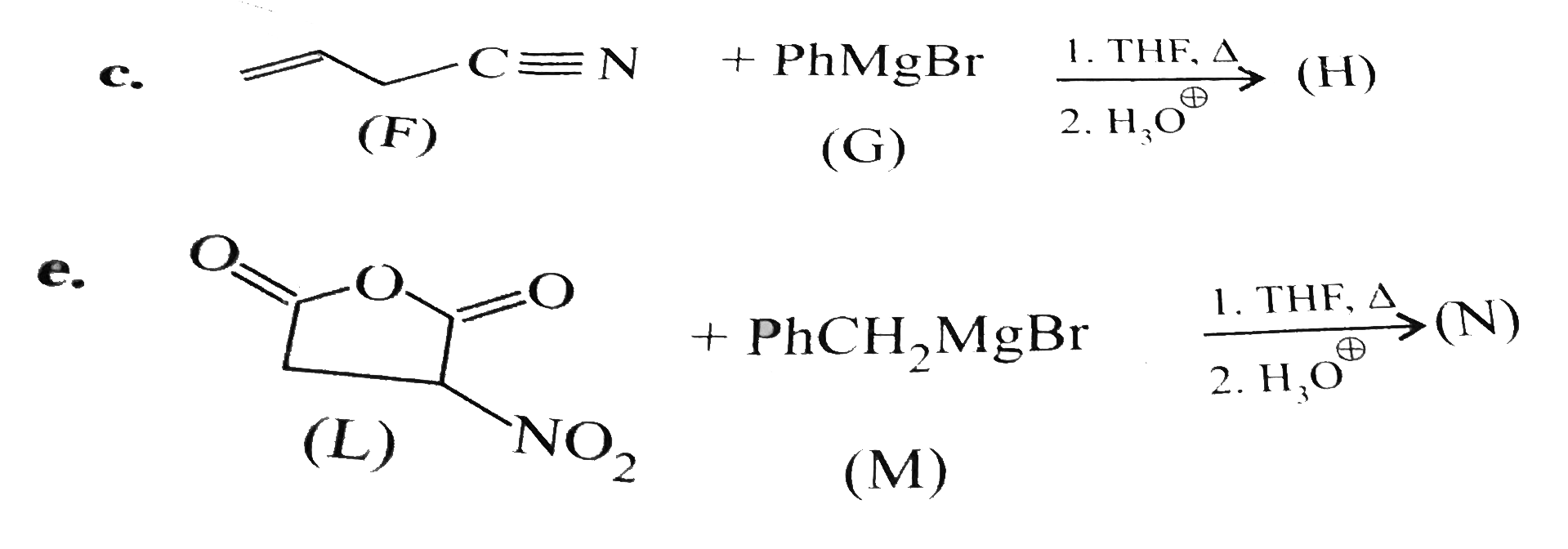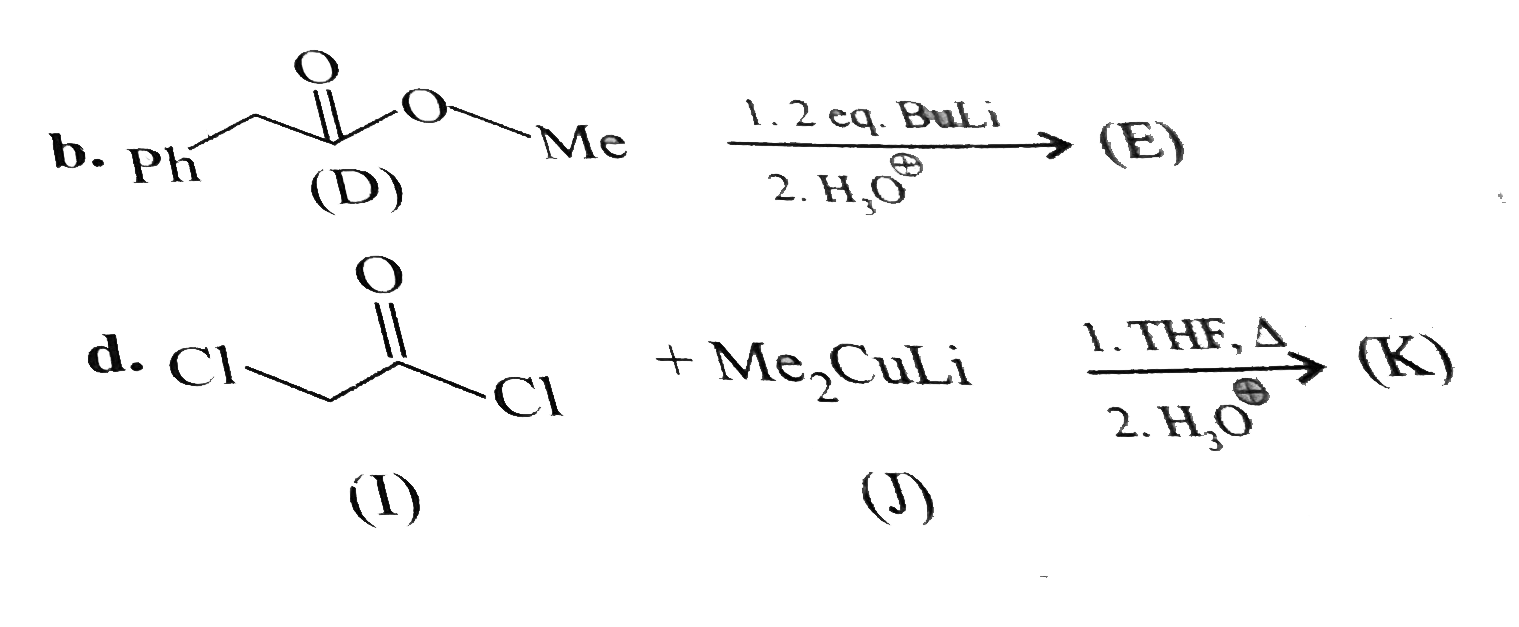Explain the following reaction :
n−BuBr+KCNEtOH−H2O−−−−−−−→n−BuCN
Video Solution
Text Solution
KCN is resonance hydride of the following two contributing structures:

Thus, CN− ion is an ambident nucleophile. Therefore, it can attack the carbon atom of C-Br bond in n-BuBr either through C or N. Since C-C bond is stronger than C-N bond, therefore, attack occurs through C to form n-butyl cyanide.

|
Topper's Solved these Questions
- HALOALKANES AND HALOARENESBOOK - PRADEEPCHAPTER - HALOALKANES AND HALOARENESEXERCISE - NCERT EXEMPLAR PROBLEMS WITH ANSWERS, HINTS AND SOLUTIONS (MULTIPLE CHOICE QUESTIONS-I)
30 Videos
- HALOALKANES AND HALOARENESBOOK - PRADEEPCHAPTER - HALOALKANES AND HALOARENESEXERCISE - NCERT EXEMPLAR PROBLEMS WITH ANSWERS, HINTS AND SOLUTIONS (MULTIPLE CHOICE QUESTIONS-II)
11 Videos
- HALOALKANES AND HALOARENESBOOK - PRADEEPCHAPTER - HALOALKANES AND HALOARENESEXERCISE - NCERT QUESTIONS AND EXERCISES WITH ANSWERS (NCERT INTEXT UNSOLVED QUESTIONS)
9 Videos
- GENERAL PRINCIPLES AND PROCESSES OF ISOLATION OF ELEMENTS BOOK - PRADEEPCHAPTER - GENERAL PRINCIPLES AND PROCESSES OF ISOLATION OF ELEMENTS EXERCISE - Curiosity Questions
2 Videos
- ORGANIC COMPOUNDS CONTAINING NITROGENBOOK - PRADEEPCHAPTER - ORGANIC COMPOUNDS CONTAINING NITROGENEXERCISE - IMPORTANT QUESTIONS FOR BOARD EXAMINATION
27 Videos
Similar Questions
Knowledge Check
The precent composition of an organic compound A is carbon 85.71% and hydrogen 14.29. its vapour density is 14. Consider the following reactions sequence
ACl2/H2O−−−−−→B(1)KCN,EtOH−−−−−−−−−−→(2)H3O+C
Identify CACH3−CH∣OH−CO2HBHO−CH2−CH2−CO2HCHO−CH2CO2HDCH3CH2CO2HOne per cent composition of an organic compound A is carbon=85.71% and hydrogen =14.29%. Its vapour density is 14. Consider the following reaction sequences.
ACl2/H2O−−−−−→(B)KCN/EtOH−−−−−−−→H3O+C, Identify C.ACH3−C∣OHO2HBHO−CH2−CH2−CO2HCHO−CH2−CO2HDCH3CH2−CO2HThe product (D) of the following reaction is
CH3ClKCN−−→(A)H2∅H+−−−−→(B)NH3−−→(C)Δ−−→(D)ACH3CH2NH2BCH3CNCHCONH2DCH3CONH2
Write the mechanism of the following reaction:
nBuBr + KCN EtOH−H2O−−−−−−−→ nBuCN
View SolutionThe product P of the following reaction is
CH3−COOHLiAlH4−−−→SOCl2−−−→K14CN−−→H3O⊕−−−→P
View SolutionComplete the following reactions :
(a) (A)i−BuBr1.Li−−−→2.CuI(B)Ph−O∣∣C−Cl−−−−−−→(C)
(b)
( c)
(d)
( e) .
.
View SolutionWhat is the major product of the following reaction ?
CH3−C≡NCH3MgI−−−−→Et2OH3O⊕−−−→
View SolutionMajor product of the following reaction
CH3−CH2−BrKCN−−→¯¯¯OH−−→H2OPCl5−−→Δ product
View Solution
